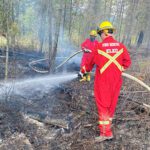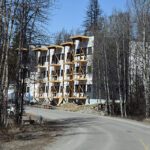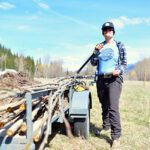Home »

Will it be clear cutting as usual after Old Growth Panel reports?
 “Perceptions,” by Gerry Warner
“Perceptions,” by Gerry Warner
Op-ed Commentary
It’s said the only constant is change and I would love to believe it. But when it comes to forestry in B.C. the only change I’ve seen is more big trees being cut down all the time and a few big companies making huge profits exploiting a Crown resource that in theory is supposed to belong to the people.
And we’re being ripped off. And so are the once seemingly endless forests of B.C., especially the old growth, which was once the biggest portion of the green blanket enveloping the province but now is only a small fraction of its former glory.
So the provincial government – and I give them credit for this – struck a special Old Growth Strategic Review Panel late last year to investigate the state of our ancient old growth forests that once reigned supreme in the province but are now reduced to isolated sites scattered around BC and mostly out of public view.
In their place, we now see the so-called ‘working forest;’ thin stands of monoculture trees specially designed for the mill instead of the diverse stands of Douglas fir, spruce and cedar that once made up one of the largest conifer forests in the world but are now marred by jagged clear-cut patches and a tangle of logging roads.
Initially, the forests were so vast that few really noticed the logging and the logging itself was kinder to the land being done by brawny lumberjacks using crosscut saws that felled individual – and very large – trees that were then moved to nearby mills by horse teams, narrow-gauge steam “donkey” trains or long water-filled, wooden flumes that were a unique form of B.C. architecture and engineering skill.
But modernity brought more efficient and mechanized equipment like chainsaws and feller-buncher machines that could chew up enormous amounts of raw timber in a matter of hours and the destructive era of clear-cut logging began that levelled forests on a gargantuan scale to the very edge of towns, cities and community watersheds all over the province.
By the 1990s, most of the good, commercial-grade timber left was old growth in remote areas that had never been logged before. Logging companies also began buying up private land with large stands of old growth on it. People began to complain. Tourists and resort owners complained because primeval forests and big trees were what they came to see in the province and increasingly there was less of Nature’s bounty to see. The beauty of “Beautiful BC” was disappearing.
And then there’s politics. If you go back almost to Day One in the province’s history, the forest industry and government have always had a very cozy relationship no matter who was in power.
H.R. MacMillan, the province’s biggest timber baron in the early 20th Century, was appointed the province’s first Chief Forester after he quit mowing down trees. Yet even he tired of the carnage going on in the woods, according to his biographer Ken Drushka. “MacMillan presciently opposed the forest tenure system adopted in B.C. in 1947 because it would lead to corporate concentration and squeeze out small operators.”
And that’s exactly what happened, of course, until today when there’s only a handful of large forestry conglomerates left dividing up the booty.
In a submission to the strategic review panel, Herb Hammond, one of B.C.’s most respected foresters, said control of forest management in B.C. was virtually handed over to private industry by the Gordon Campbell Liberal government when it eliminated the Forest Practises Code and replaced it with a management system of “professional reliance” dominated by the forest companies themselves. In other words, the fox was in charge of the chickens!
The result, says Hammond, was “short-term profits of timber companies were put ahead of the well-being of both forest workers and the ecosystem services that sustain us all.”
And now we await the recommendations of the Old Growth Strategic Review Panel to be released in six months. Will they recommend management of our public forests be returned to the people? Or will they recommend “business as usual” with the private companies in charge?
My gut feeling is that the companies are already sharpening their chainsaws.
Gerry Warner is a retired journalist and an unrepentant tree hugger.







